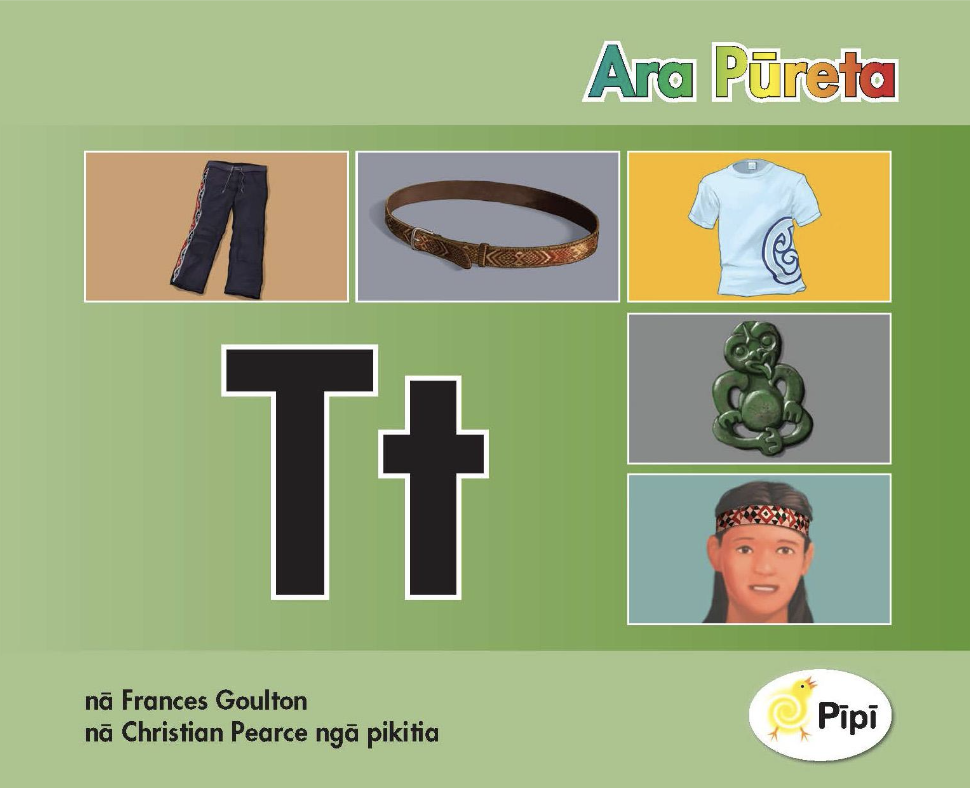I NGĀ MARAMA E ONO
TE WHAKAAKO I TE TUHI Ā-RINGA
I ngā marama e ono: Te Tuhi ā-Ringa
In the first six months, ākonga are likely to be at different stages of readiness for handwriting when they start kura.
Manipulative activities such as drawing, colouring in, and cutting out will help them to develop the necessary hand-eye coordination before they learn letter formation.
Encouraging first efforts at handwriting on large sheets of paper using crayons or paint brushes can also help those ākonga who need more practice with gross hand-eye movements before using the fine hand-eye movements required for handwriting with a pencil. Focus on shape and direction - drawing patterns of straight lines, or forward circles and backward circles.
I ngā marama e ono: Kua rite ki te Tuhi ā-Ringa
If ready for handwriting with a pencil, identify ākonga preference for using their left or right hand to write. Ensure they know how to use the correct grip according to that preference.
He puringa ringa mauī
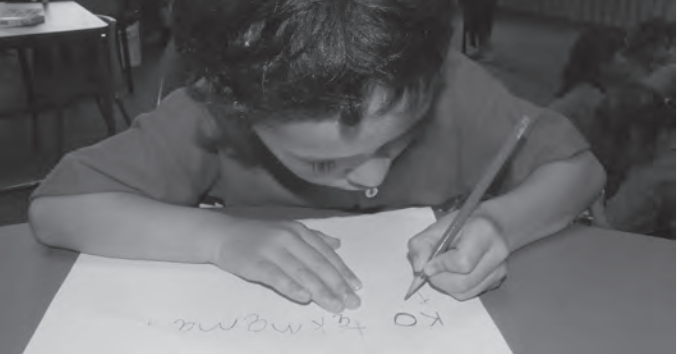
He puringa ringa matau
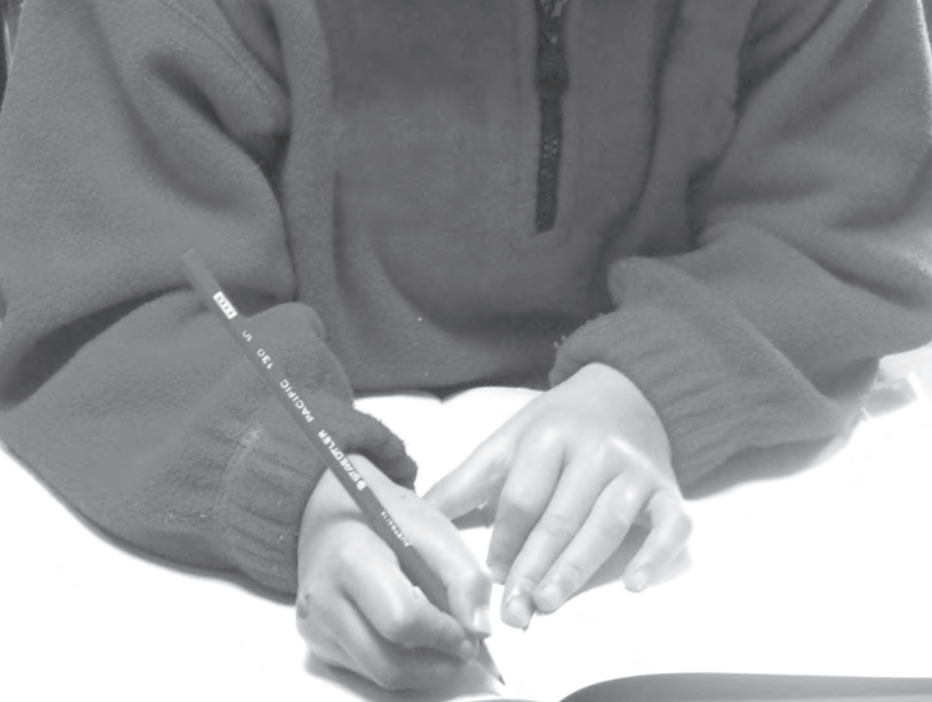
NOTE: Using the index finger of the right hand to mark spaces in between words is difficult for ākonga who write with their left hand.
I ngā marama e ono: Te Raupapa Whakaako Pū
If ākonga are ready for formal handwriting instruction in books with lines, use the following sequence. Letters have been grouped according to the movement used to write them correctly.
For example, t, w, and wh are formed using downward straight lines, while, m, h, r, n, ng are formed with a forward arched movement. At this stage, have ākonga practise lowercase letters.
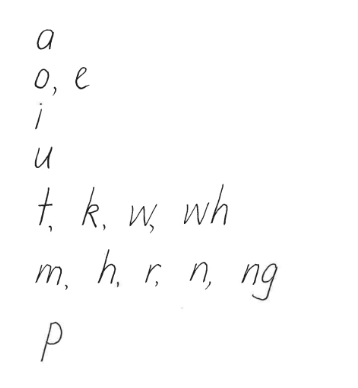
NOTE: The 'o' should be shaped as an oval.
NOTE: This sequence differs somewhat from the order for teaching Te Oro Arapū ā-Tā (alphabetic principle) which is the second element of Rangaranga Reo ā-Tā under Ngā Whenu: Wetewetehia kia tika (technical accuracy) because the order for the latter is based on different criteria.
Ākonga who do not yet have fine hand-eye co-ordination needed to handwrite in a book printed with lines are better to practice with larger writing utensils (e.g. crayons, bullet-point whiteboard or thick felt pens and chalk) and on larger unlined pieces of paper or other surfaces (concrete, laminated tables, handheld whiteboards - use water-soluble pens only, etc).
I ngā marama e ono: Te Raupapa Whakaako Tohutau
Handwriting is an opportunity to also support ākonga to learn to write numerals. Teach letters and numerals in the same time frame but in separate sessions or lessons and in their counting order as follows, with the numerals for 0, 1 and 2 taught together. This is to minimise confusion with the numeral 0 and the letter o; and the numeral 1 and the letters i, and I.
Model how to form the numerals through demonstration and verbalisation as you would with letters.
The other numerals should be taught separately because each one has a unique form.
Ensure there is a clear distinction between the two sets of symbols, possibly using different.
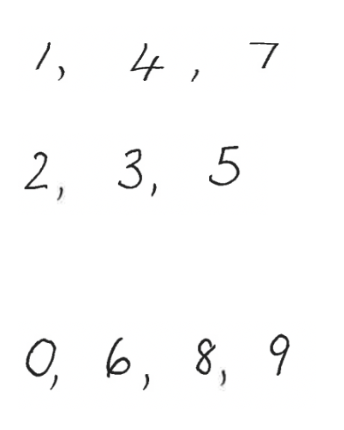
Formed with straight lines.
Formed with forward curves.
Formed with backward curves.
I ngā marama e ono: Te Whakaako Tuhi ā-Ringa
1) Begin by modelling the letter or numeral and verbalising the movement. Verbalisation should include where to begin, the direction of the movement, and where to stop. For example, you are teaching the letter ‘t’.
2) As you form the letter on the whiteboard you would say,
"Tīmata i runga, heke iho ki te rārangi, hikitia, me pēnei i waenganui, tuhi whakapae, e tū".
(Start at the top, down to the line, lift, cross in the middle, stop).
Do this several times until you have reached the end of your line on the whiteboard. At this point you may decide to choose an ākonga to have a go at forming the letter on the whiteboard in front of the class.
3) Ākonga would all then practise writing the letter in their handwriting books, repeating your verbalisation as they do so. Ākonga who are first learning to write may benefit from forming the letter in the air and verbalising with you before writing in their books.
4) Feedback should be given immediately to ensure ākonga are not reinforcing incorrect forms, particularly when they are first learning to write. Verbalisations are no longer necessary once ākonga know where to start and how to form letters correctly.
5) Walk around the room giving guidance as the ākonga practice the letters. Some ākonga may require the extra support of your hand over theirs as they write so that they can feel the correct movement.
The Ara Pūreta books in the Pīpī pānui series in Tāhūrangi cover the letters of the arapū Māori and aim to familiarise ākonga with the look and sound of each letter and the formation and writing of letters into words.
Each main page contains a letter, a word, and a simple sentence. The shaping of the letter is also supported.
I ngā marama e ono: Te Aromatawai i te Tuhi ā–Ringa
MAHI AROMATAWAI: What to look/listen for, ākonga are:
Grip and Posture
Grip: Check the ākonga is holding the writing instrument correctly with a tripod grip, which involves using the thumb, index, and middle fingers.
Posture: Ensure the ākonga is sitting up straight with their feet flat on the floor, and their non-writing hand is holding the paper steady.
Letter and Numeral Formation
Shape: Look for correct formation of each letter and numeral, making sure they follow the standard shape and size.
Start and End Points: Check that ākonga start and end letters and numerals at the correct points.
Direction: Check that strokes are made in the correct direction (e.g., top to bottom, left to right).
Fine Motor Skills
Coordination: Assess hand-eye coordination and control over fine motor movements and verbalising the movements.
Strength: Ensure the ākonga has adequate hand strength to hold and control the writing instrument.
Attitude and Persistence
Effort: Note ākonga effort and persistence in improving their handwriting.
Attitude: Observe their attitude towards handwriting practice—whether they are engaged and motivated or frustrated and disinterested.
